Electric trucks took up a lot of space in the exhibit hall at this year’s ACT Expo — and that meant 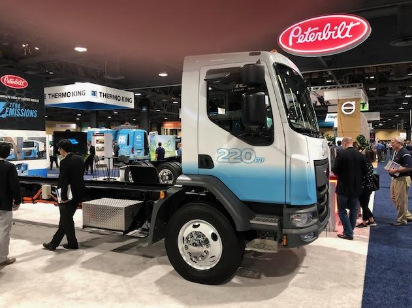 medium and heavy trucks along with commercial applications such as electric delivery and refuse trucks. This time major truckmakers took center stage, and specialized makers had announcements to share as well. With about 4,000 attendees, it was the largest ACT Expo yet.
medium and heavy trucks along with commercial applications such as electric delivery and refuse trucks. This time major truckmakers took center stage, and specialized makers had announcements to share as well. With about 4,000 attendees, it was the largest ACT Expo yet.
During his keynote speech, Roger Nielsen, president and CEO of Daimler Trucks North America (DTNA), the largest commercial vehicle manufacturer in North America, said his company will be putting about 50 battery electric test vehicles on roads by the end of this year through its Freightliner division, built at a renovated plant in Oregon. 20 of them will be medium- and heavy-duty electric trucks for Penske Corp. and NFI Inc., a major third-party logistics company, under a grant from the South Coast Air Quality Management District. Near-zero-emissions natural gas medium- and heavy-duty vehicles are currently available and will continue from Freightliner as an interim solution until full commercialization of the battery-electric Freightliner eM2 and eCascadia, he said. Its Thomas Built unit will be rolling out Proterra-powered electric school buses.
Peterbilt Motors Co. showed off new electric trucks, including the Model 220EV, Model 520EV, and Model 579EV. The 220EV is spec’d with the Meritor Blue Horizon eAxle and the 520EV will feature the Transpower mid-ship powertrain configuration, while the 579EV will feature the new Allison AXE Series e-Axle. Six of the 579EVs were demonstrated at the exhibit that have been finished for customers. “Today, we have 14 electric vehicles built, on our way to more than 30 by the end of the year, for real customer routes and to analyze performance so that our production options meet the standards customers expect when buying a Peterbilt,” said Peterbilt’s Chief Engineer Scott Newhouse.
While it was outside ACT Expo, Ford on Wednesday announced it’s putting $500 million into electric truck startup Rivian Automotive. Both companies have agreed to work together to develop a battery electric vehicle for Ford’s growing EV portfolio using Rivian’s skateboard platform.
Volvo Trucks North America Wednesday hosted the California Air Resources Board (CARB) as they presented a $44.8 million check to the South Coast Air Quality Management District (South Coast AQMD) for the Volvo LIGHTS (Low Impact Green Heavy Transport Solutions) project. The Volvo LIGHTS project is a partnership among the Volvo Group, South Coast AQMD and industry leaders in transportation and electrical charging infrastructure. The project was created ti demonstrate the ability of battery electric vehicles to improve freight and warehouse efficiencies, reduce emissions, and improve air quality. As part of the project, Volvo Trucks will introduce all-electric Volvo VNR regional-haul demonstrators in California later this year, with vehicle sales planned to begin in 2020.
Other introductions at ACT Expo 2019 included:
- BYD Motors will deliver 14 yard tractors to two BNSF Railway intermodal facilities in Southern California, adding to an ongoing demonstration project.
- Chanje has partnered with refrigeration unit supplier Thermo King on a prototype zero-emissions refrigerated van.
- Xos, the new name for electric truck startup Thor Trucks, will retrofit two Loomis Armored US cash-hauling trucks. An order for 100 more trucks awaits if the test models show the trucks’ value.
- EV Connect is launching a program aimed at standardizing EV charger management and use for both transportation fleets and charging-equipment developers. The EV Charge Station Certification program already has been completed by seven of the industry’s largest charger makers.
- Ryder’s booth featured a comprehensive charging infrastructure solution, provided by In-Charge Energy. In-Charge provides nationwide turnkey energy and commercial electric vehicle infrastructure solutions to ensure customers maximize the full economic benefits of adopting electric vehicles into their fleet. Its end-to-end model focusing on behind the meter solutions is an industry first.
- An Amply Power Inc. white paper showed fleets saved an average 37 percent compared with traditional fuels by electrifying their buses and light-duty vehicles. Fleets that charged during off-peak hours could save as much as 60 percent, according to the white paper.
- Tritium created the “world’s most powerful charger,” the Veefil-PK 175-475kW DC High Power Charger which can add nearly 300 miles range to an EV in just 10 minutes.
- The first production fuel cell-powered heavy-duty truck jointly developed by Toyota and Kenworth Truck Co. is going forward. The new truck is the first of 10 planned under a $41 million California Air Resources Board grant matched by Toyota, Kenworth, and Royal Dutch Shell.
- Penske Truck Leasing announced it will open commercial heavy-duty electric vehicle charging stations with 14 high-speed chargers at four of its existing facilities in Southern California. These will be among the first DC fast charging stations in the U.S. designed specifically for heavy-duty commercial electric vehicles.
- The North American Council for Freight Efficiency recently released a report, Regional Haul: An Opportunity for Trucking, that looks at this growing market segment and was shared during a seminar at ACT Expo. Long-haul trucking isn’t what it used to be, according to the report. Forty five percent of the Class 8 tractors produced today are day cabs and a high percentage of those trucks are involved in regional haul operations.
- Gladstein, Neandross and Associates (GNA) and the University of California at Riverside’s Bourns College of Engineering – Center for Environmental Research and Technology (CE-CERT) announced the launch of the Low and Zero Emission Readiness (LAZER) Initiative. This new collaboration will support organizations —including transit agencies, refuse operations, trucking carriers, delivery fleets, school districts, municipalities, and more — in evaluating the real-world economic and environmental benefits of advanced transportation technologies.

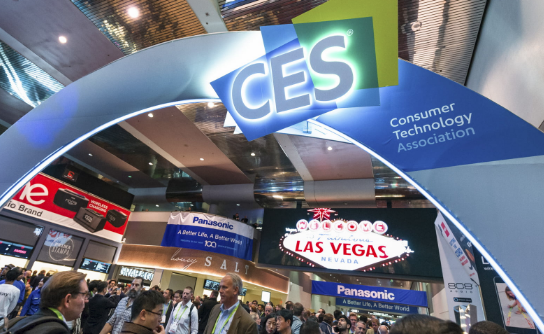 depends on who you ask, but don’t forget about the North American International Auto Show in Detroit. In fact, it clearly beat CES in online attention. The Detroit auto show’s week of news conferences and other events (Jan. 14-17) got nearly 60% more mentions in news and social media than automotive news and topics the week before at CES. That comes from a study by Talkwalker, an advisory company in online marketing.
depends on who you ask, but don’t forget about the North American International Auto Show in Detroit. In fact, it clearly beat CES in online attention. The Detroit auto show’s week of news conferences and other events (Jan. 14-17) got nearly 60% more mentions in news and social media than automotive news and topics the week before at CES. That comes from a study by Talkwalker, an advisory company in online marketing.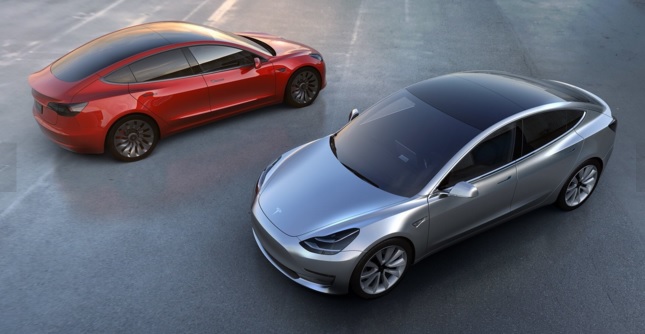 few days for December and all of 2018; but so far, it was clearly a year of record-setting plug-in hybrid and battery electric vehicles sales in the U.S. Through November, U.S. sales were at 312,887 for plug-in vehicles, compared to 194,479 for all of 2017, according to Electric Drive Transportation Association. Assuming 350,000 units will be sold in 2018, the increase would be about 55% over the previous year. InsideEVs estimates the Tesla Model 3 closed the month with 25,250 sold in the U.S. That compares to 18,650 sold in November. Lately, there’s been a wide gap between the Model 3 and every other plug-in vehicle sold in the U.S., with top sellers like the Tesla Model S and Model X, Chevrolet Bolt and Volt, and Toyota Prius Prime, each hovering somewhere around 3,000 units sold per month. The Nissan Leaf was able to see its first sales increase in a long time.
few days for December and all of 2018; but so far, it was clearly a year of record-setting plug-in hybrid and battery electric vehicles sales in the U.S. Through November, U.S. sales were at 312,887 for plug-in vehicles, compared to 194,479 for all of 2017, according to Electric Drive Transportation Association. Assuming 350,000 units will be sold in 2018, the increase would be about 55% over the previous year. InsideEVs estimates the Tesla Model 3 closed the month with 25,250 sold in the U.S. That compares to 18,650 sold in November. Lately, there’s been a wide gap between the Model 3 and every other plug-in vehicle sold in the U.S., with top sellers like the Tesla Model S and Model X, Chevrolet Bolt and Volt, and Toyota Prius Prime, each hovering somewhere around 3,000 units sold per month. The Nissan Leaf was able to see its first sales increase in a long time. market, are engaged in another race to see who can launch a successful stock market public offering first. While
market, are engaged in another race to see who can launch a successful stock market public offering first. While  new
new 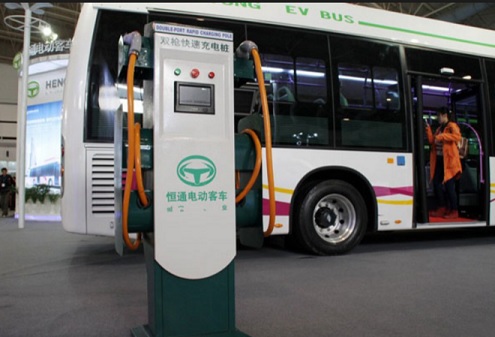 Bloomberg New Energy Finance. That will mean last year’s 386,000 units sold will go up to 1.2 million in the next seven years. Strong domestic support and aggressive city-level targets will mean China accounts for 99% of the world’s battery-powered buses by 2025, the report said. Last year’s electric bus sales dropped from 115,700 sold in China in 2016 to 89,546 last year due to policy changes and incentives being cut back during that time. This year will see changes as policy from national and local/city governments start to collide,
Bloomberg New Energy Finance. That will mean last year’s 386,000 units sold will go up to 1.2 million in the next seven years. Strong domestic support and aggressive city-level targets will mean China accounts for 99% of the world’s battery-powered buses by 2025, the report said. Last year’s electric bus sales dropped from 115,700 sold in China in 2016 to 89,546 last year due to policy changes and incentives being cut back during that time. This year will see changes as policy from national and local/city governments start to collide,  consumers and fleets make sound purchase decisions. One of these will be taking place February 10-19 during the 2018 Chicago Auto Show, where attendees will have the chance to test drive vehicles such as the all-new 2018 Nissan Leaf, 2018 Chrysler Pacifica Hybrid, and 2018 Mitsubishi Outlander PHEV. Chicago Area Clean Cities Coalition is hosting the test drives in partnership with the Midwest EVOLVE program. The American Lung Association is a key sponsor to Midwest EVOLVE. The Clean Cities partners include Twin Cities Clean Cities Coalition, Chicago Area Clean Cities, Clean Fuels Ohio, Earth Day Coalition, Greater Lansing Area Clean Cities, North Dakota Clean Cities, South Shore Clean Cities, and Wisconsin Clean Cities.
consumers and fleets make sound purchase decisions. One of these will be taking place February 10-19 during the 2018 Chicago Auto Show, where attendees will have the chance to test drive vehicles such as the all-new 2018 Nissan Leaf, 2018 Chrysler Pacifica Hybrid, and 2018 Mitsubishi Outlander PHEV. Chicago Area Clean Cities Coalition is hosting the test drives in partnership with the Midwest EVOLVE program. The American Lung Association is a key sponsor to Midwest EVOLVE. The Clean Cities partners include Twin Cities Clean Cities Coalition, Chicago Area Clean Cities, Clean Fuels Ohio, Earth Day Coalition, Greater Lansing Area Clean Cities, North Dakota Clean Cities, South Shore Clean Cities, and Wisconsin Clean Cities. year. The 1,875 sales total for the Model 3 for January
year. The 1,875 sales total for the Model 3 for January  from $2.490 a month ago. Diesel is at $2.998, up from $2.509 a year ago and $2.893 a month ago. As for the price of a barrel of oil, West Texas Intermediate (WTI) crude oil has gone up from $53.01 on Feb. 6, 2017 to $64.73 today.
from $2.490 a month ago. Diesel is at $2.998, up from $2.509 a year ago and $2.893 a month ago. As for the price of a barrel of oil, West Texas Intermediate (WTI) crude oil has gone up from $53.01 on Feb. 6, 2017 to $64.73 today. Green Score of 64. Winners of the award issued annually by the American Council for an Energy-Efficient Economy (ACEEE) earn a high Green Score rating based on an environmental damage index (EDX). The index estimates pollution from vehicle manufacturing, the production and distribution of fuel, and vehicle tailpipes. ACEEE found that what makes this year’s award winner and others on the top ranking stand out is affordable, efficient, tech-smart vehicles that are now on the market, offering consumers plenty of options for buying a greener vehicle. The Ioniq was acknowledged for bringing high efficiency in a practical size. The Mercedes-Benz Smart Fortwo Electric Drive, BMW i3, Kia Soul Electric, Ford Focus Electric, and Honda Clarity also took places among the greenest vehicles on the market. ACEEE also issued the Meanest List leaning toward large SUVs, loaded pickup trucks, heavier medium-duty vehicles, and European luxury cars that are the least friendly to the environment. The Mercedes Benz G550 took the lowest score of 19.
Green Score of 64. Winners of the award issued annually by the American Council for an Energy-Efficient Economy (ACEEE) earn a high Green Score rating based on an environmental damage index (EDX). The index estimates pollution from vehicle manufacturing, the production and distribution of fuel, and vehicle tailpipes. ACEEE found that what makes this year’s award winner and others on the top ranking stand out is affordable, efficient, tech-smart vehicles that are now on the market, offering consumers plenty of options for buying a greener vehicle. The Ioniq was acknowledged for bringing high efficiency in a practical size. The Mercedes-Benz Smart Fortwo Electric Drive, BMW i3, Kia Soul Electric, Ford Focus Electric, and Honda Clarity also took places among the greenest vehicles on the market. ACEEE also issued the Meanest List leaning toward large SUVs, loaded pickup trucks, heavier medium-duty vehicles, and European luxury cars that are the least friendly to the environment. The Mercedes Benz G550 took the lowest score of 19.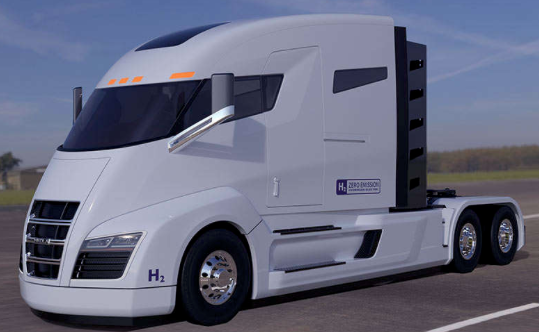 plans to build
plans to build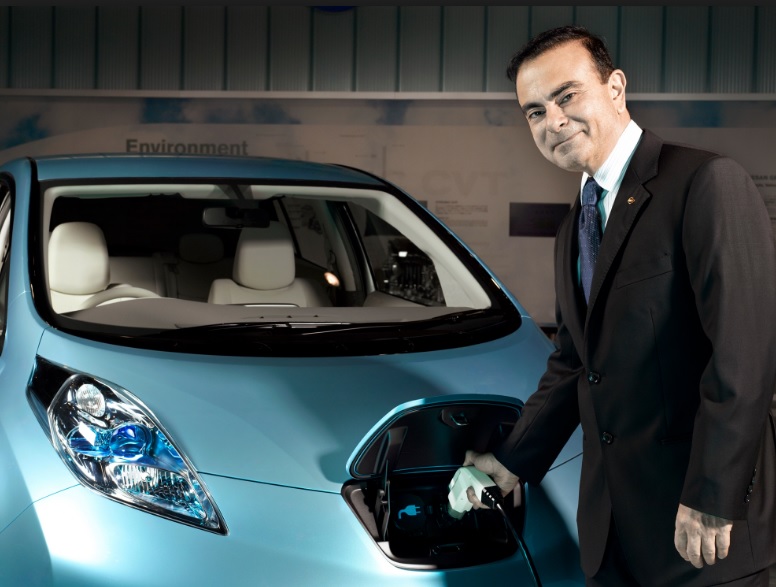 during 2017. That was made up of 10.61 million new vehicles sold last year with Nissan bringing in 5.82 million, Renault 3.76 million, and its Mitsubishi subsidiary (acquired in 2016) selling 1.03 million. VW came in at 10.53 million and longtime winner Toyota Motor sold 10.2 million. CEO Carlos Ghosn has pledged to tap into economies of scale and double savings by 10 billion euros ($12 billion) by 2022. That assumes annual sales will rise to 14 million vehicles. Sharing parts and consolidating platforms is the foundation it’s being built on, as it usually cuts r&d and manufacturing costs. The Alliance will be rolling out 12 new all-electric models using common platforms by 2022, Ghosn said late last year. Plug-in hybrid models will also be utilized, coming from Mitsubishi’s experience with the Outlander PHEV. Two other utility plug-in hybrids will be coming to market over the next two years. The alliance companies have collectively already sold more than a half million plug-in electrified vehicles.
during 2017. That was made up of 10.61 million new vehicles sold last year with Nissan bringing in 5.82 million, Renault 3.76 million, and its Mitsubishi subsidiary (acquired in 2016) selling 1.03 million. VW came in at 10.53 million and longtime winner Toyota Motor sold 10.2 million. CEO Carlos Ghosn has pledged to tap into economies of scale and double savings by 10 billion euros ($12 billion) by 2022. That assumes annual sales will rise to 14 million vehicles. Sharing parts and consolidating platforms is the foundation it’s being built on, as it usually cuts r&d and manufacturing costs. The Alliance will be rolling out 12 new all-electric models using common platforms by 2022, Ghosn said late last year. Plug-in hybrid models will also be utilized, coming from Mitsubishi’s experience with the Outlander PHEV. Two other utility plug-in hybrids will be coming to market over the next two years. The alliance companies have collectively already sold more than a half million plug-in electrified vehicles.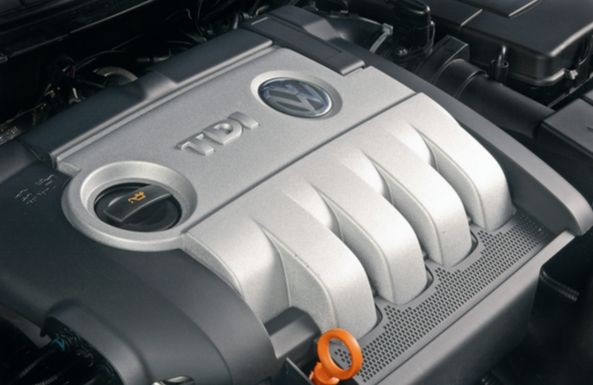 Thomas Steg, today in response to reports that the company and two competitors had sponsored tests that exposed monkeys and humans to toxic diesel fumes. The company had come under scrutiny again last week after The New York Times reported that VW, BMW, and Daimler had funded an organization called European Research Group on Environment and Health in the Transport Sector (EUGT) to carry out the tests. These methods used in the U.S. were wrong, unethical, and repulsive, VW CEO Matthias Mueller said Monday. The study had been conducted in 2014 to defend diesel following reports that diesel car fumes were carcinogenic. The EUGT study had been dissolved last year. This news was revealed right after Germany’s KBA automotive watchdog has detected illicit emission-control software in Audi’s latest Euro-6 diesel models. KBA has ordered a recall of these 127,000 vehicles, putting more pressure on parent company VW to comply with government mandates in the U.S. and Europe.
Thomas Steg, today in response to reports that the company and two competitors had sponsored tests that exposed monkeys and humans to toxic diesel fumes. The company had come under scrutiny again last week after The New York Times reported that VW, BMW, and Daimler had funded an organization called European Research Group on Environment and Health in the Transport Sector (EUGT) to carry out the tests. These methods used in the U.S. were wrong, unethical, and repulsive, VW CEO Matthias Mueller said Monday. The study had been conducted in 2014 to defend diesel following reports that diesel car fumes were carcinogenic. The EUGT study had been dissolved last year. This news was revealed right after Germany’s KBA automotive watchdog has detected illicit emission-control software in Audi’s latest Euro-6 diesel models. KBA has ordered a recall of these 127,000 vehicles, putting more pressure on parent company VW to comply with government mandates in the U.S. and Europe.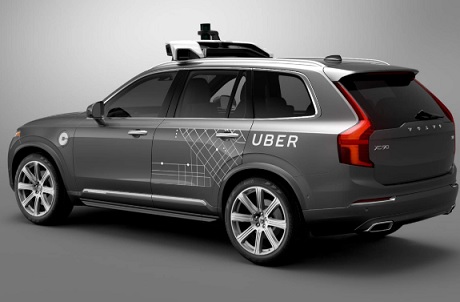 familiar with the matter told Reuters that BMW has bought out its partner, German car rental company Sixt, from its joint venture that had backed the DriveNow car-sharing unit. The two automakers are talking about a new JV that would offer car sharing, ride-hailing, electric vehicle charging, and digital parking services. Daimler’s Car2Go has had a strong presence in Europe and the U.S., and DriveNow has been growing in these regions. Ride-hailing itself is expected to be a $285 billion segment by 2030 once self-driving ride-hailing services are in place, according to Goldman Sachs. A senior executive at one of the two German carmakers who declined to be named said the new JV “will create an ecosystem which can also be used for managing robotaxi fleets.”
familiar with the matter told Reuters that BMW has bought out its partner, German car rental company Sixt, from its joint venture that had backed the DriveNow car-sharing unit. The two automakers are talking about a new JV that would offer car sharing, ride-hailing, electric vehicle charging, and digital parking services. Daimler’s Car2Go has had a strong presence in Europe and the U.S., and DriveNow has been growing in these regions. Ride-hailing itself is expected to be a $285 billion segment by 2030 once self-driving ride-hailing services are in place, according to Goldman Sachs. A senior executive at one of the two German carmakers who declined to be named said the new JV “will create an ecosystem which can also be used for managing robotaxi fleets.”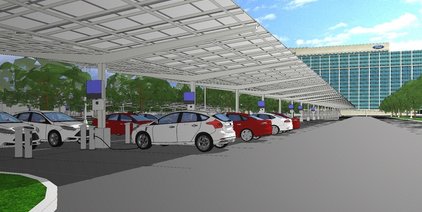 the prestigious
the prestigious